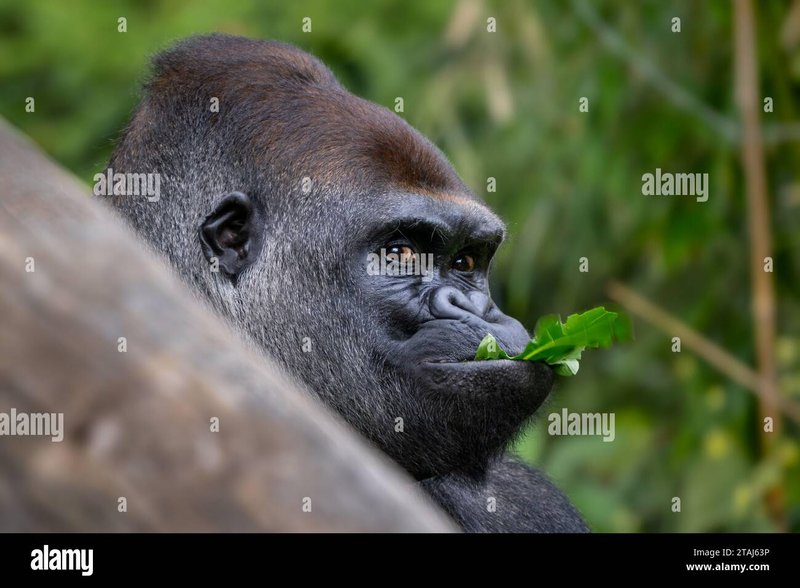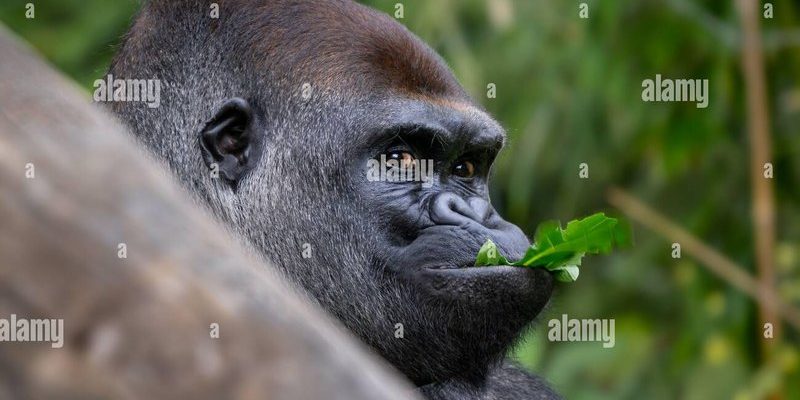
Now, let’s dive into what makes the Western gorilla so special and the factors that have led it to the brink of extinction. Understanding their plight can help us see the bigger picture of wildlife conservation and why it matters. So, grab a cup of coffee, and let’s get into it.
Understanding the Western Gorilla
The Western gorilla is one of the two species of gorillas, the other being the Eastern gorilla. Within the Western gorilla, there are two subspecies: the Western lowland gorilla and the Cross River gorilla. They are known for their impressive size, intelligence, and social behavior. Imagine a giant teddy bear, but even more powerful and capable of complex emotions and social interactions. These gentle giants primarily live in the rainforests of Central and West Africa, where they play a crucial role in their ecosystem.
They’re herbivores, munching on leaves, fruits, and stems, which helps maintain the health of their habitat. Just like plants depend on bees and butterflies for pollination, the forest depends on these gorillas for seed dispersal. However, human activities threaten their survival, leading to a significant decline in their population.
What’s Driving Them to Endangerment?
Honestly, the situation for the Western gorilla is concerning. There are several key factors contributing to their endangered status:
- Habitat Loss: Deforestation for logging, agriculture, and mining is chopping down their homes. It’s like tearing down your neighborhood for a new shopping mall. Gorillas need their space to thrive.
- Poaching: Sadly, these animals are hunted for bushmeat and the illegal pet trade. Think of it like young people being taken away from their families to be sold; it’s heartbreaking.
- Diseases: Diseases like Ebola have wiped out many gorilla populations. It’s similar to a virus going around in a crowded city where everyone is vulnerable.
Each of these threats weaves together like a tangled web, making it incredibly difficult for the Western gorilla to bounce back.
The Numbers Speak: Population Decline
According to recent estimates, the Western lowland gorilla population has decreased by more than **60% in the past 30 years**. That’s a staggering number, and it’s not just a statistic—it represents real lives and a significant loss in biodiversity. The Cross River gorilla, on the other hand, has only about **200 to 300 individuals** left in the wild. Picture that: a small gathering of friends, but this is an entire species hanging on by a thread.
To put it in perspective, these numbers indicate that if we don’t act soon, we could lose these magnificent creatures forever. Just like if a café continues to lose patrons without making changes, it might soon close its doors for good.
Conservation Efforts in Motion
Despite the grim outlook, there’s hope on the horizon, thanks to various conservation efforts. Organizations around the world are working hard to protect these gorillas and their habitats. Here are some ways they’re doing this:
- Protected Areas: Establishing national parks and reserves allows gorillas to roam freely and safely. Think of it like building a fortress where they can thrive without the threat of poachers or habitat loss.
- Community Involvement: Educating local communities about the importance of gorillas helps foster a sense of stewardship. It’s like a neighborhood watch program, but for wildlife!
- Anti-Poaching Initiatives: Many organizations are employing rangers to patrol gorilla habitats and prevent poaching, similar to having security guards ensuring everyone’s safety.
These combined efforts are slowly but surely making a difference in the fight for the Western gorilla’s survival.
How Can You Help?
You might be wondering what you can do to make a difference. The good news is that everyone can contribute, whether through small actions or larger commitments. Here’s how:
- Support Conservation Organizations: Donating to groups that focus on gorilla conservation can help fund their important work. It’s like giving a tip to support your favorite barista—they can keep doing what they do best!
- Spread Awareness: Share information about gorillas on social media. The more people who know, the more advocates there are. It’s like a ripple effect in a pond.
- Adopt Sustainable Practices: Reducing deforestation by choosing sustainable products helps protect gorilla habitats. Think of it as making a conscious choice to support a green movement.
Each small step adds up to a significant impact, giving the Western gorilla a fighting chance.
Global Implications of Losing the Western Gorilla
Losing the Western gorilla isn’t just a tragedy for these animals; it has broader implications for global biodiversity and ecosystems. Gorillas play a vital role in their habitats, helping distribute seeds and maintain forest health. Without them, the entire ecosystem could shift, leading to a loss of species and a decline in forest health. It’s a domino effect, where one loss triggers many others.
Moreover, gorillas attract ecotourism, which provides income for local communities. If they vanish, the economic impact could be devastating, akin to losing a major tourist attraction in a town. This loss would ripple through the economy, affecting jobs and livelihoods.
The Path Forward: A Collective Responsibility
Protecting the Western gorilla is not just the responsibility of conservationists; it’s something that we all need to be a part of. It’s similar to a community coming together to save a beloved local park—everyone has a role to play. Governments, NGOs, local communities, and individuals around the world must unite to create a safer future for these incredible creatures.
Wildlife conservation is like a team sport. The more players, the more successful the game. If we act collectively, informed by insights and a shared commitment, we can create a brighter future for the Western gorilla and the ecosystems they inhabit.
In conclusion, the Western gorilla faces tremendous challenges, but there is hope. With increased awareness, targeted conservation efforts, and global collaboration, we can work toward a future where these magnificent beings continue to thrive. After all, just like that café needs its community to survive, so too do our wild cousins. Let’s rally together to ensure that future generations can experience the wonder of the Western gorilla.

